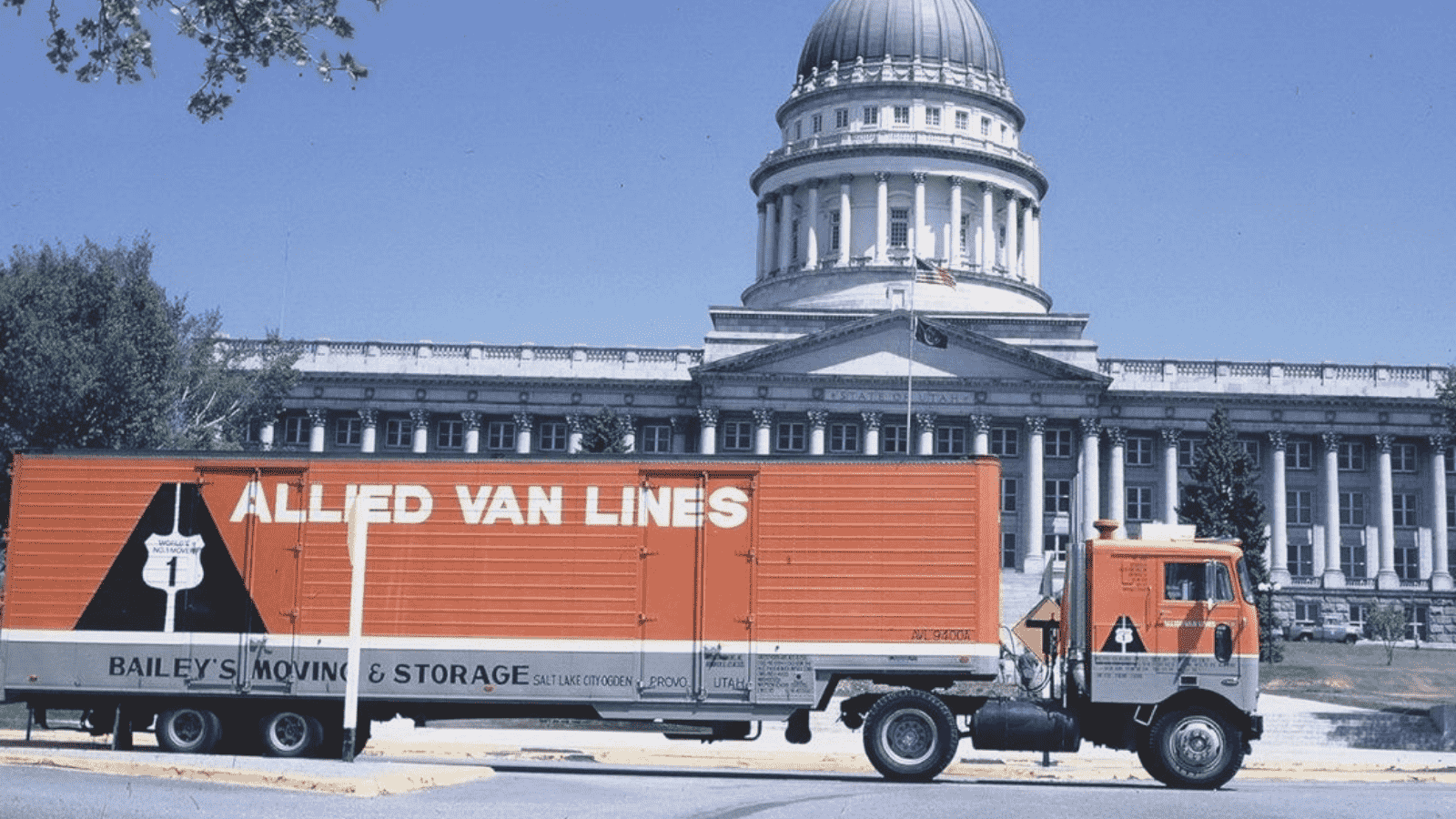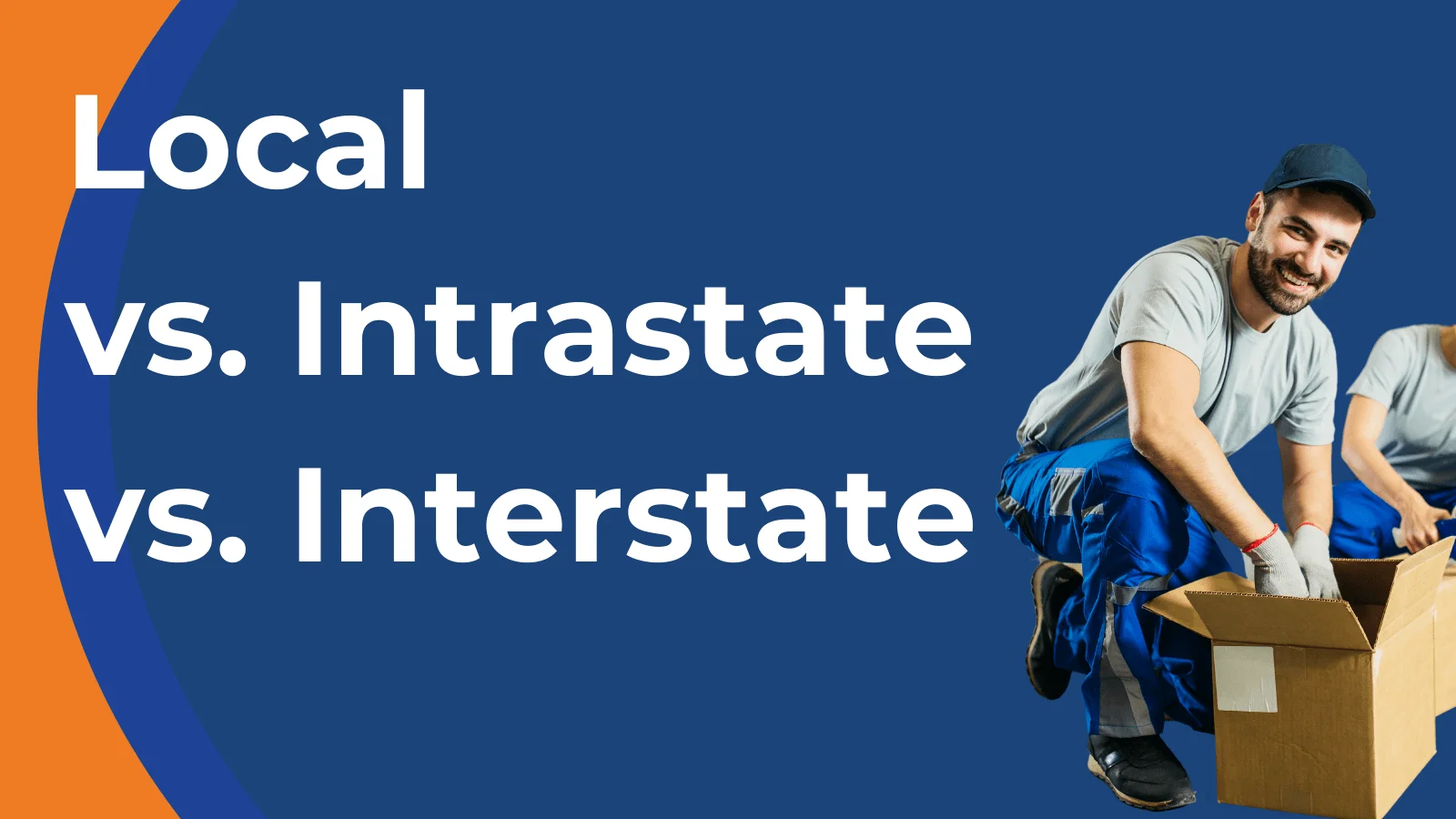Moving is one of the top 5 most stressful things you can do in your life. It’s right up there with divorce and losing your job. As such, gaining a concrete understanding of the moving process can alleviate the stress and frustration that can come with selecting a mover.
The nuances between types of moves, pricing, and moving regulations can transform your journey. Below, we’ve broken down the top three differences between local and interstate moves to give you more insight into the moving process.
1.) The Specifics
While the differences between moves in the U.S. seem self-explanatory on the surface, they differ drastically when touching on the specifics.
Local Moves
Any move under 50 miles is generally considered a local move. When it comes to moving day, the crew will be with you (in most cases) for the entire process. This includes loading and unloading.
Moving companies that offer local moving services can range from strictly local movers to global van lines that service local all the way up to international moves. Picking which moving company you'd like to service your local move depends primarily on their availability and pricing options.
What If My Move Is In-State but Exceeds 50 Miles?
Moves that involve relocating beyond 50 miles but remaining in the same state are categorized as intrastate moves. Don’t expect to pay the same rates as local moves. Some intrastate moves can exceed 300 or 400 miles, and with greater distance comes greater cost.
Additionally, some local movers may not be able to accommodate a long-distance move. Make sure to always ask if the local moving company can service your longer move.
Interstate Moves
An interstate move involves the transportation of goods within the United States. This move occurs between a place in one state and a place in another state. For delivery of your shipment, the driver typically will hire a crew for the loading. Then, once the driver reaches your destination, they utilize a different crew for unloading.
2.) Pricing
The cost of a local move differs widely from that of an intrastate or interstate move. Additionally, the way you’re charged for the move differs as well.
The Cost of Local Moves
Local moves are charged on an hourly basis. Local move rates vary depending on the size of the crew. The industry standard is two movers, one truck. The more people (crew) you have on your move, the faster it will be completed. By paying for more movers, the job will be accomplished in less time. You’ll pay less overall.
The travel fee for local moves covers labor and fuel costs. The time starts when the truck leaves the warehouse. Though it may be tempting to hire the cheapest local mover via online ad or word of mouth, remember that lower costs often come at the price of experience. The distance may be short, but quality movers make all the difference.
Pricing an Intrastate Move
Because it’s considered a long-distance move, it will be priced at the moving company’s discretion. Some will still by the hour and add an additional fee while others will charge by distance and weight. Longer intrastate moves are charged by the weight of your shipment.
Costs for Interstate Moves
There’s a common misconception that the price won’t go up much if you’re moving across state lines. Interstate moving costs are dictated by how much you’re moving, how heavy it is, and the number of miles the shipment will travel.

3.) Rules & Regulations
No matter the distance, moving companies are required to follow certain laws and regulations. The difference on which rules they’re required to follow depends on the types of moves they specialize in.
Strictly local movers follow state-set regulations while van lines and out-of-state movers abide by rules set by the USDOT and FMCSA. The regulations movers must follow are essential in ensuring you’re paying for legitimate services that are monitored by a state or federal agency.
Regulations for Local and Intrastate Moves
Local movers don’t have to register with the FMCSA. They abide by the rules made by their own state. Currently, 38 states require that moving companies get a USDOT number for intrastate and local moves.
The states that don’t currently require local movers to obtain a USDOT number include: Alaska, Arizona, Delaware, District of Columbia, Maine, Maryland, Rhode Island, South Dakota, Utah, and Vermont.
The USDOT is used by the federal government to collect information for audits, compliance reviews, and inspections. It’s also used by the federal government to enforce and monitor safety regulations. As one could assume, this information is also very useful for consumers wanting to know performance metrics for their next potential mover. You can reference a local/intrastate mover’s data either by USDOT number or by name.
In addition to registering with the USDOT, many states require that local movers register with their state-level regulatory agency. For example, in Colorado local movers are required to obtain a USDOT number, a HHG license for the transportation of household goods, and a PUC license as a property carrier.
While most local movers are regulated by state-level governments, always make sure to do your research and request a written estimate for a local move. If you live in a state that doesn’t require local movers to register with the USDOT, make sure to ask what their rules for safety and regulatory processes are. If they can’t provide accurate, detailed information, chances are they aren’t reputable.
FMCSA Regulations for Interstate Moves
Interstate movers must be assigned a USDOT number and be registered with the FMCSA. In contrast to strictly local or intrastate movers, moving companies that move shipments across state lines have to follow guidelines established by the federal government.
By registering with the FMCSA, interstate movers must follow certain rules and regulations established over 20 years ago by the Department of Transportation in an attempt to enhance motor vehicle safety across state lines.
Some of these regulations apply to safety standards for the vehicles and personnel, while others involve customer and company interaction. In summation, interstate movers must provide written, accurate documentation (such as a bill of lading and written estimate) to the customer. They must also arrange reasonable dispatch between the carrier and the shipment transportation.
The FMCSA does a lot to protect you, the consumer, and the movers themselves. As such, the first step you can take to vetting out options for your interstate mover is making sure they’re registered with the FMCSA.

Your Move Type Matters
The type of move you’re going to have greatly impacts how the movers will charge you, the process your movers follow, and the regulations they must follow. Overall, make sure to pick a moving company that is first and foremost reputable. Make sure they follow standard practices that you’d want to see done during your move. It’s just as important to understand what you’ll be paying as how your movers are going to do the job.


